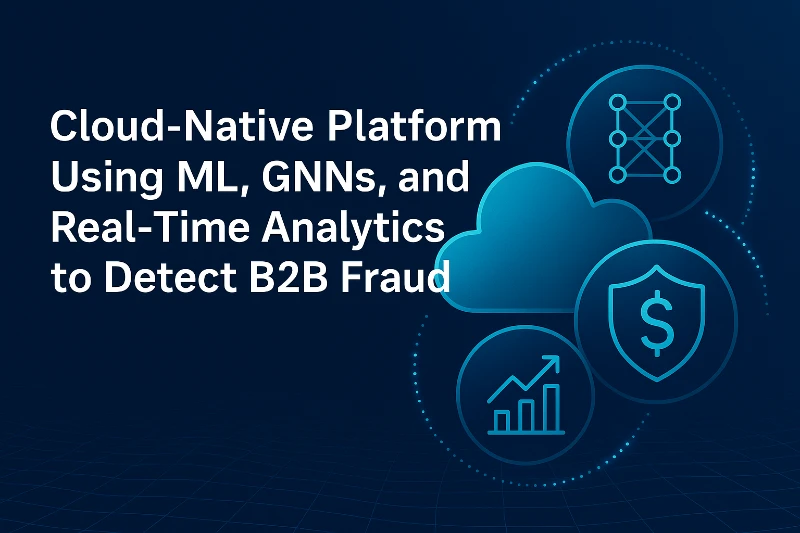A Cloud-Native Unified Platform for Real-Time Fraud Detection in B2B Financial Services
Published on 17 Apr 2025

Financial institutions are under growing pressure to combat increasingly sophisticated fraud schemes. Traditional rule-based systems and delayed, batch-oriented detection methods can no longer keep pace with the speed and complexity of modern financial threats. In response to this challenge, we present a next-generation fraud detection platform designed specifically for B2B financial services — one that is intelligent, scalable, and cloud-native.
Our solution integrates real-time data streaming, machine learning (ML), graph analytics, and cloud data warehousing into a unified architecture. At its core is the ability to detect and block fraudulent transactions as they occur — not after the fact. Using streaming anomaly detection techniques, the platform continuously monitors incoming transaction flows and flags unusual behaviors within milliseconds. This ensures that fraud is intercepted before funds are transferred, significantly reducing financial losses and operational risks.
A key innovation lies in the use of Graph Neural Networks (GNNs) for fraud detection. Traditional fraud models evaluate transactions in isolation, missing the broader context of how accounts, users, and devices relate to one another. GNNs, however, enable our platform to model relationships between entities — identifying coordinated fraud rings and suspicious patterns across networks. This allows the system to catch subtle, high-risk activities like collusion between shell companies or devices used across multiple fraudulent accounts.
Our platform also supports continuous self-learning. It incorporates a feedback loop where every confirmed fraud case, false positive, or new anomaly becomes part of the system’s evolving intelligence. ML models are retrained automatically based on new data, adapting to emerging threats and maintaining high detection accuracy over time. This adaptive capability is crucial in addressing concept drift — the challenge of fraud patterns evolving faster than legacy systems can adapt.
Another pillar of the platform is its unified data pipeline, combining real-time event ingestion with a scalable cloud data lake or warehouse. This architecture allows seamless access to both historical and real-time data, powering everything from model training to investigation dashboards. By consolidating data from multiple sources — transactions, login events, user profiles, device metadata — the platform enables a holistic view of activity and a more accurate fraud risk assessment.
Built with cloud-native technologies such as microservices, containers, and serverless functions, the system offers elastic scalability and high availability. It can handle thousands of events per second with low latency, making it suitable for large-scale B2B financial networks. Its modular design also allows flexible integration with existing systems via RESTful APIs and messaging queues, ensuring smooth deployment within complex financial infrastructures.
From a business standpoint, this unified approach reduces false positives, improves investigation efficiency, and enhances customer trust. Financial institutions can reduce manual review costs, accelerate fraud response times, and provide a frictionless experience to legitimate customers. For fintech providers and payment processors, this platform offers a competitive edge — a smarter fraud defense mechanism that evolves in step with adversarial tactics.
In summary, our cloud-native fraud detection platform offers a groundbreaking combination of streaming analytics, graph-based machine learning, and continuous adaptation. It transforms how financial institutions approach fraud — from reactive and siloed to proactive, intelligent, and unified. Whether deployed as a managed service or integrated into a private cloud, the solution provides an investor-ready, scalable foundation for next-gen fraud prevention in B2B finance.
